|
THE STORY
| Wallace Abroad
|
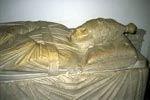
Pope Boniface VIII in St Peter's, Rome © Vatican, St Peter's
|
Following his loss of the position as leader of Scotland Wallace showed no sign of giving up on his goals of reinstating King John Balliol on the throne of Scotland and seeing it an independent country again. He remained involved in military action attacking the occupying enemy when possible. However, it was around 1299 that he left Scotland, and travelled to Europe, hoping diplomatic efforts would succeed where military ones had failed. His movements are not recorded with any great accuracy. It is possible he might have gone to Norway before visiting France. It is also suggested that while at his court he was asked by the French King Philip IV to join his service - an offer he refused. It is known he left for Rome around November 1300. There he took part in a hearing at the papal court on England's claim on Scotland.
|
Return to Scotland
The exact date and method of Wallace's return to Scotland from his European venture is not known. He was still a wanted man, and travelling to Europe exposed him to possible capture. Edward I returned to Scotland in the summer of 1300 to campaign in the South West, where he captured Caerlaverock Castle.
|
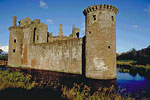
Caerlaverock Castle © Crown Copyright reproduced courtesy of Historic Scotland
|
Edward I’s Campaigns
|
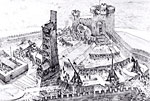
Bothwell Castle (Siege) © Crown Copyright reproduced courtesy of Historic Scotland
|
Longshanks returned again to Scotland in 1301 leading a larger army than the previous year. However, this attempt to conquer Scotland was to no avail. Despite its failure one success of Edward's campaign was the siege and capture of Bothwell Castle in South Lanarkshire. The King's son (the future Edward II) was given the task of conquering the south west: Robert the Bruce's territory. However, he proved no more successful than his father.
|
|
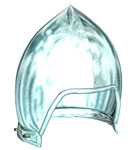
Bascinet helmet © Graphite Productions
|
The Scots continued their armed struggle. One figure who stepped forward was John De Soules (or Soulis) who waged a war of attrition, conducting lightning raids and harassing the English troops as much as possible as Wallace had done in the past. A large pitched battle was to be avoided at all costs. He became Guardian in 1301. He and the others frustrated Edward I so much a truce was declared in January 1302 which lasted 9 months.
|
France and England - Peace
France and England negotiated a treaty for peace in 1303 which Scotland was not part of. This left Edward free to concentrate on establishing his rule over Scotland. He restarted his offensive on Scotland following the end of the truce, taking personal charge from May 1303. His progress up the east of Scotland was untroubled, only meeting the first real opposition at Brechin, where the garrison held the castle for 40 days, and at Stirling Castle, which held out against the pounding of giant siege engines until July 1304. Robert the Bruce had lent Edward I his siege engine for this siege. Some of the siege engines involved could hurl a 300 pound missile over half a mile! Edward I made it to Kinloss in Moray by September, and returned to spend the winter at Dunfermline Abbey.
|
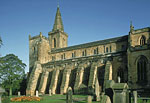
Dunfermline Abbey and Palace © Crown Copyright reproduced courtesy of Historic Scotland
|
Submission
|
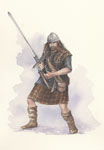
William Wallace © Dianne Sutherland
|
After Wallace's return he continued his policy of harassing the English army. It is known he took part in the raids on the southwest in 1303. One target was Annandale, Robert the Bruce's home land. Bruce had defected to Edward's side and was called to provide men to fight for him. What Wallace thought of Bruce's defection to Edward's side can only be imagined. However, on the wider scale, resistance was dwindling in Scotland. These small-scale raids did not distract Edward from his main aim of defeating any Scottish resistance. This he achieved in February 1304 with the submission of Scotland, which was brought about through the acceptance by the chief nobles of his terms of peace. No facility was made for Wallace to be included. Edward I said: "As for William Wallace, it is agreed, that he shall render himself up at the will and mercy of our sovereign lord the king as it shall seem good to him." Wallace was now more isolated and exposed than ever.
His demise was inevitable.
|
Pursuit
Edward was intent on capturing Wallace. Efforts were made including financial inducements to reward the pursuers and eventually blackmail, by enticing others he was chasing with promises of reducing their own individual punishment if they brought Wallace to him. Wallace was not turned in by any of those providing him with shelter and he escaped ambush attempts mounted by those being paid by Edward. He had to face severe tests such as near Peebles in early 1304 and later in September 1304 at Earnside, where Wallace and his men fought off the Earl of Pembroke, Aymer de Valence's force.
|
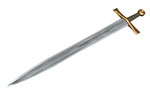
13th Century Sword © Granite Productions
|
Capture
|

Dumbarton Castle © Anne Buddle
|
Despite the agreed peace, Wallace continued to wage war with his small band of soldiers but he was always under constant threat of capture. This came on the 3rd of August 1305, at Robroyston near Glasgow. He was captured by Sir John Menteith. Menteith had been involved in fighting on the Scottish side in the Wars of Independence but had sworn allegiance to Edward I, who had rewarded him by making him sheriff and keeper of Dumbarton Castle. He was not given this position as a reward for betraying Wallace as often thought.
|
Treachery and Betrayal
It is widely assumed that Wallace was taken as a result of treachery and betrayal. One account describes "" heard news among companions of William Wallace, the master of the thieves; Sir John de Menteith followed him close at his heels and took him in bed beside his strumpet". However, the memorial at Robroyston marks ""the house in which the hero of Scotland was basely betrayed and captured about midnight on 5th August 1305 when alone with his faithful friend and co-patriot Kerile who was slain."
|
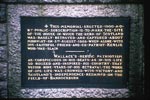
Wallace Monument, Robroyston © Stirling Smith Art Gallery & Museum
|
Menteith
|

Lake of Menteith, Stirling © James Gardiner
|
Menteith's role in the capture of this folk hero is supposed to be marked in two different ways: on the guardhouse at Dumbarton Castle, a gargoyle with a horribly contorted face is called the "fause (false) Menteith"; and the Lake of Menteith is the only natural water body in Scotland described as a lake, and not as a loch. It is sometimes argued that the reason for this was to deliberately isolate a loch associated with a much hated figure who was seen as betraying Scotland. However, this is a myth as it was known as the Loch of Menteith until the 19th century. Its modern name may be a Victorian alteration reflecting its rather atypical setting compared to other scottish lochs and the name of the surrounding area. The 'Laigh' [meaning 'low' with gh pronounced as ch in loch] of Menteith is the low lying land beside the loch. The word laigh may have been mistaken for lake.
|
Trial
Wallace was taken immediately to England, his final journey through Scotland being done at night to prevent anyone noticing his passing and alerting those who might want to secure his release by force of arms. He arrived in London on 22nd August and was led past jeering crowds on his way to his �€˜trial' at Westminster Hall the next day. There he was placed on a wooden gantry, and made to wear a humiliating crown of laurel, supposedly in reply to a boast he was supposed to have said that he would one day wear a crown there.
|
It was not a trial by modern standards: there was no jury, defence lawyers, witnesses, appeal, statements by the defendants, or any of the procedures that we are familiar with. The charges were read out and then the sentence. Wallace was accused of crimes such as murder, arson, and robbery " all of which he was guilty of, and also of the most contentious of charges: treason. As he had never sworn loyalty to Edward or the English crown, he couldn't be charged of treason, it is argued, and with some legitimacy. However this is perhaps naïve, and not taking into account the circumstances surrounding Edward's view of Wallace and indeed Scotland. He regarded it as a mere fiefdom of his to do with as he pleased. The niceties of law were not uppermost in his mind: exacting punishment on this troublesome outlaw Wallace was.
|
There was no opportunity as part of the process for the accused to speak, although Wallace did make one interjection, declaring that while he admitted the other crimes, he did not commit treason against the English king as he had never sworn loyalty. His king was a Scottish one: John Balliol.
|
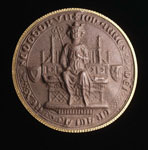
Seal impression (cast) of John I © National Museums of Scotland
|
|
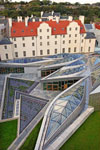
Scottish Parliament Building, showing the roof of the Garden Lobby and Queensberry House © Scottish Parliament
|
In 2002 efforts began to have Wallace's treason charge repealed. A Parliamentary motion was proposed by MSP Phil Gallie. In 2004 a petition was also lodged with the Scottish Parliament to: "acknowledge on public record that William Wallace was not guilty of the charge of treason laid before him; and to make representations to the United Kingdom Parliament for a declaration of his innocence and that he be exonerated of that charge." Although discussed by the Scottish Parliament's Public Petitions Committee, the petition was closed in the spring of 2005.
|
William Wallace was dragged " or "drawn" behind horses 4 miles to Smithfield. This was the punishment for treason. He was then hanged, the punishment for the crimes such as arson, murder and robbery. He was cut down before he could die. He was then emasculated (castrated) and disembowelled. His internal organs were burnt, as a punishment for his sacrilegious treatment of the religious buildings. His head was cut off and put on a spike on London Bridge. His body was then cut into 4 pieces and each sent to different places: Newcastle upon Tyne, Berwick, Perth, and Stirling, or possibly Aberdeen. Wallace's struggle was finally over.
|
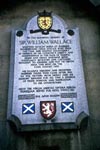
Wallace Memorial, Smithfield, London © Stirling Smith Art Gallery & Museum
|
|
|







